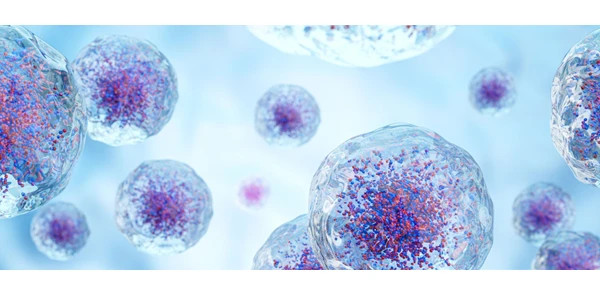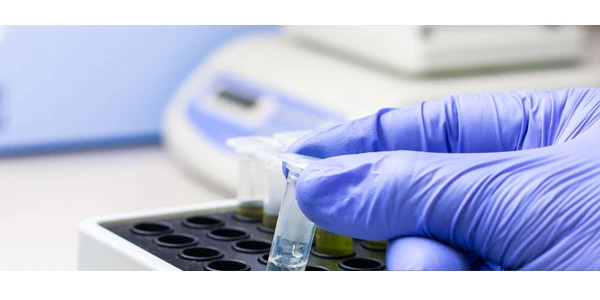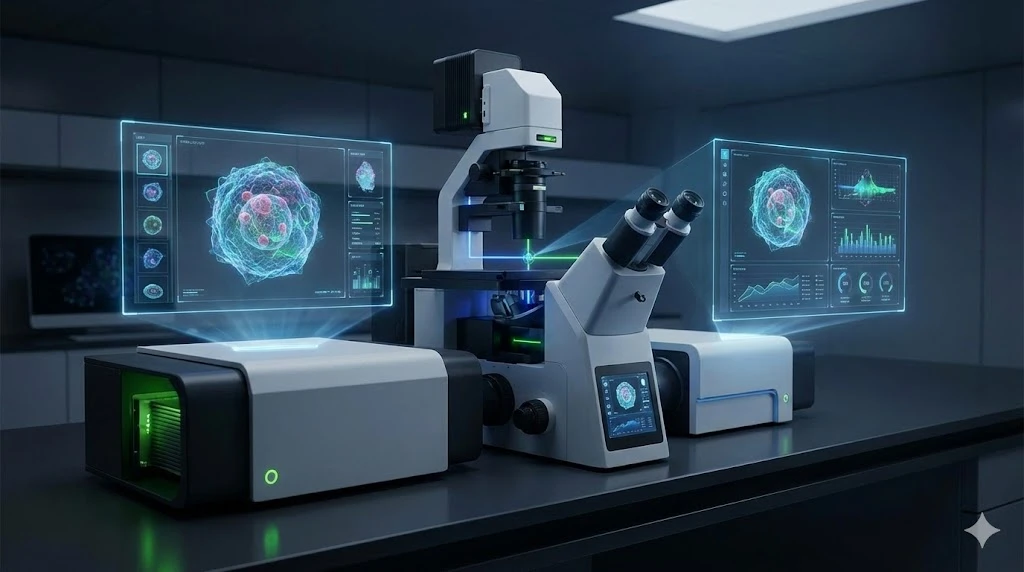Unlocking Cannabis Terpenes: A Comprehensive Guide to Their Role and Advanced Analysis

ImageFX (2025) Beyond the well-known cannabinoids like THC and CBD, cannabis boasts a rich tapestry of phytochemicals that contribute to its unique characteristics and therapeutic potential. Among these, terpenes stand out as the largest and most diverse group, with over 100 identified compounds. These aromatic molecules are not just responsible for the distinctive scents and flavors that differentiate cannabis strains; they also play a profound role in the plant's medicinal properties, often working in synergy with cannabinoids to enhance or modulate their effects.
As the cannabis industry continues to mature and regulations evolve, the accurate identification and quantification of terpenes have become increasingly critical. This guide delves into the fascinating world of cannabis terpenes, exploring their classification, their impact on the user experience, and the sophisticated analytical techniques essential for precise profiling.
What Are Cannabis Terpenes and Why Do They Matter?
Terpenes are organic compounds found in a wide variety of plants, contributing to their fragrance and flavor. In cannabis, they are produced primarily in the glandular trichomes of the flower, alongside cannabinoids. While often overshadowed by cannabinoids, terpenes are gaining significant recognition for their individual therapeutic benefits and their ability to influence the overall cannabis experience through what is known as the "entourage effect."
Key Roles of Terpenes in Cannabis:
Aroma and Flavor: Terpenes are the primary drivers of the diverse aromatic profiles in cannabis, ranging from citrusy and piney to earthy and spicy notes.
Medicinal Properties: Many terpenes exhibit their own therapeutic effects, including:
Anti-inflammatory
Antimicrobial
Analgesic (pain-relieving)
Anxiolytic (anxiety-reducing)
Antidepressant
Antioxidant
Synergistic Effects (Entourage Effect): Terpenes can interact with cannabinoids and other cannabis compounds to amplify or modify their effects. This synergy can occur through various mechanisms, such as:
Modulation of cannabinoid receptor interactions
Increased permeation of the blood-brain barrier
Activation of non-cannabinoid receptors
Terpene Classification:
Terpenes are classified based on the number of 5-carbon isoprene units they contain:
Terpene Class
Number of Carbons
Examples (in Cannabis)
Monoterpenes
10
D-limonene, β-myrcene, β-pinene
Sesquiterpenes
15
β-caryophyllene, α-humulene
Triterpenes
30
(Less common in volatile cannabis extracts)
Monoterpenes typically dominate the volatile terpene fraction in cannabis, contributing significantly to the immediate aroma. Sesquiterpenes are also present in substantial proportions and often contribute to the deeper, more complex notes.
The Indispensable Role of Terpene Analysis in Cannabis
As the legal cannabis market expands, so does the demand for comprehensive product testing. Initially focused primarily on cannabinoid potency and contaminants, regulatory guidelines in several states now explicitly include terpene profiling. This shift underscores the growing understanding of terpenes' importance not only for consumer experience but also for product consistency, safety, and therapeutic claims.
Why is Accurate Terpene Profiling Essential?
Quality Assurance: Ensures product consistency and verifies strain-specific characteristics.
Consumer Information: Provides detailed insights into a product's potential aroma, flavor, and effects, empowering consumers to make informed choices.
Regulatory Compliance: Meets evolving state-specific testing requirements, preventing product recalls and legal issues.
Research and Development: Supports ongoing research into the therapeutic potential of specific terpene profiles and aids in the development of new cannabis products.
Product Stability: Helps identify potential degradation pathways, as terpenes can break down or change over time, especially when exposed to heat and light.
Advanced Techniques for Accurate Terpene Profiling: GC and GC-MS
The preferred and most reliable methods for analyzing these complex aromatic compounds are Gas Chromatography (GC) and Gas Chromatography-Mass Spectrometry (GC-MS). These techniques offer the precision and sensitivity required to identify and quantify the diverse terpene profiles found in cannabis.
How GC and GC-MS Work:
Sample Preparation: Cannabis samples (flower, extracts, edibles) are prepared to extract or isolate the volatile terpenes. For solid or viscous samples, a front-end device like a headspace autosampler is highly advantageous. This automates the introduction of volatile compounds into the GC system, ensuring a steady and reproducible workflow. Advanced techniques such as the Full Evaporation Headspace Technique (FET) are particularly useful for materials that do not readily dissolve in solvents, allowing for direct analysis of the vapor phase above the sample.
Gas Chromatography (GC): The prepared sample is injected into a capillary GC system. Inside the GC, the sample is vaporized and carried by an inert gas (e.g., helium) through a long, narrow column. The column is coated with a stationary phase, and as the compounds travel through it, they separate based on their differing affinities for the stationary phase and their boiling points. Lighter, more volatile terpenes will elute (exit the column) faster than heavier ones. A split flow inlet on the capillary GC is crucial for analyzing high-concentration compounds and standards without compromising the system's performance or sensitivity.
Mass Spectrometry (MS): After separation in the GC, the individual terpene compounds enter the mass spectrometer. Here, they are ionized, and their fragments are detected based on their mass-to-charge ratio. Each compound produces a unique "fingerprint" or mass spectrum, allowing for definitive identification. A single quadrupole mass spectrometer is well-suited for the analysis of small molecule secondary metabolites like terpenes.
This combined approach provides both excellent separation (GC) and unequivocal identification (MS), making it the gold standard for terpene analysis.
Ensuring Precision: Calibration, Standards, and Future Trends in Terpene Testing
Achieving accurate and reproducible terpene quantification requires rigorous adherence to analytical best practices. A critical step involves the use of high-quality analytical standards for each terpene in the panel.
The Calibration Process:
Calibration Curve Construction: Known concentrations of individual terpene standards are analyzed to create a calibration curve. This curve plots the instrument's response against the known concentrations.
Linearity and Reproducibility Checks: The calibration curve is meticulously checked for linearity across the expected concentration range and for its reproducibility over multiple analyses.
Quantification: Once a robust calibration curve is established, the concentrations of terpenes in unknown cannabis samples can be accurately measured by comparing their instrument response to the curve.
This methodical approach not only permits precise quantification but also enables the identification and relative concentrations of terpene analogs and coeluting species (compounds that elute at similar times in the GC). This level of detail is vital, especially given that terpenes can undergo breakdown and chemical changes over time, processes often exacerbated by environmental factors like heat and light.
As the significance of terpenes becomes even more evident through scientific research, and as states continue to expand their cannabis testing guidelines to include comprehensive terpene profiling, the demand for accurate, precise, and efficient analytical methods will only grow. Laboratories equipped with advanced GC and GC-MS systems, coupled with robust quality control protocols, will be at the forefront of ensuring product quality and consumer safety in this evolving industry.
Final Thoughts on Cannabis Terpenes
Terpenes are far more than just the aromatic backbone of cannabis; they are integral to the plant's therapeutic efficacy and overall appeal. Their complex interplay with cannabinoids and their individual health benefits underscore the critical need for precise analytical profiling. As the cannabis market matures, robust terpene analysis will continue to be a cornerstone of quality assurance, regulatory compliance, and informed consumer choice.
For state-of-the-art analytical equipment and solutions to meet your cannabis testing needs, explore the extensive range of products available at LabX.
Frequently Asked Questions (FAQ)
What is the "entourage effect" and how do terpenes contribute to it? The "entourage effect" is a theory suggesting that cannabis compounds, including cannabinoids and terpenes, work synergistically to produce a greater therapeutic effect than any single compound alone. Terpenes contribute by modulating cannabinoid receptor interactions, enhancing absorption, and offering their own distinct therapeutic properties.
Why is terpene testing important for cannabis products? Terpene testing is crucial for quality control, ensuring product consistency, verifying strain authenticity, and providing consumers with accurate information about a product's potential aroma, flavor, and effects. It also helps meet evolving regulatory compliance standards in many legal cannabis markets.
What analytical methods are commonly used to identify and quantify terpenes? The gold standard analytical methods for terpene identification and quantification are Gas Chromatography (GC) and Gas Chromatography-Mass Spectrometry (GC-MS). These techniques offer the precision needed to separate, identify, and measure the various volatile terpene compounds in cannabis samples.
Can terpene profiles change in cannabis products over time? Yes, terpene profiles can change over time due to degradation. Terpenes are volatile and sensitive to environmental factors such as heat, light, and oxygen. Proper storage and packaging are essential to preserve the integrity of a product's terpene profile.










